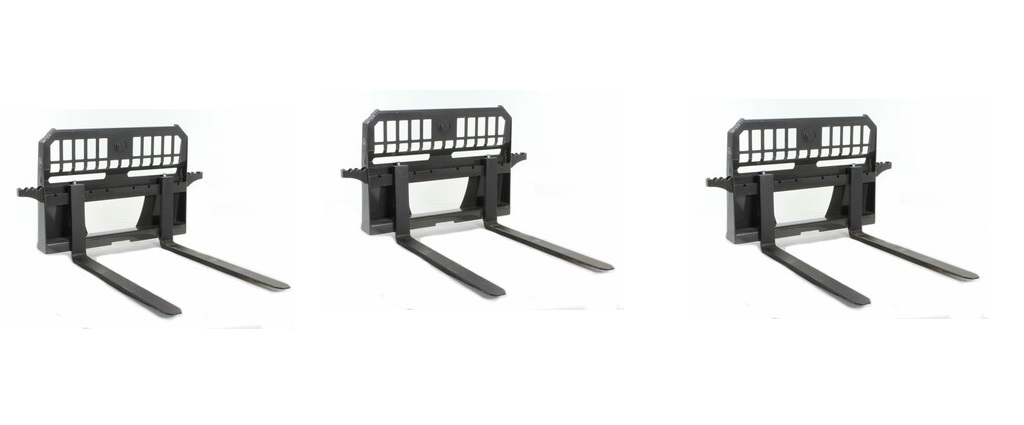Like a specialized forklift but oftentimes more versatile and therefore more practical, skid steer forks just might be some of the most useful skid steer attachments in your arsenal.
If you’re not using them for some of these tasks, you’re leaving utility at the door. Here are a few things you can do with those skid steer forks.
Top Uses of Skid Steer Forks
From the most basic, straightforward applications to more involved, improvisational assignments, fork frames and fork attachments can make the grade.
1.Moving and managing palletized inventory
Obviously, fork attachments are specifically designed to manage palletized inventory. If you need to lift, move, rearrange or stack palletized goods, fork attachments reign supreme. You can also use them for loading inventory for distribution as well as for condensing, stacking, or compiling palletized merchandise or materials, quickly and efficiently.
2.Lifting packaged construction materials
Skid steer forks aren’t just great in the warehouse or distribution center. They can be a lifesaver on a construction site, especially if you need to move heavy, bundled, or bulk construction materials such as cinderblocks, bricks, roofing tiles, flooring, timber, and so much more. Even if they’re not palletized, construction materials can often be stacked right on the forks and moved into place as needed.
3.Lifting and moving agricultural goods – such as baled bay
While a bale spear is more specialized for moving round and square bales of hay, fork attachments will do in a pinch. It all depends on the skill of the operator. If all you have to clear a field of baled hay is a skid steer with forks – well, you could do worse.
The same thing goes for other heavy agricultural loads that can be placed on the forks, even if the material is not palletized. Oftentimes, a set of forks is still the perfect attachment for loading and moving those bulk materials.
4.Moving fence posts, logs, and other wide debris
Because skid steer forks often don’t present limits on width, they can be the perfect skid steer attachments for moving heavy, unwieldy, wide loads.
The lack of barriers or width constraints makes them ideal for moving brush, large vegetative debris, logs, heavy rolls of fencing, fence posts, and even rolled sod. There are other more specialized attachments for these jobs, but you may be able to make do with a skid steer equipped with attached forks.
Maneuverability, Versatility, Clear Visibility, and More
Despite the fact that skid steer forks are not as specialized as some other skid steer attachments, they offer a number of benefits to most operators.
One is versatility. The more specialized a tool or attachment becomes, the more versatility it loses. Forks basically constitute a wide, separated platform consisting of two tines. Simple, but effective for moving and loading.
When a skid steer is equipped with a fork attachment, it also offers a high degree of maneuverability that some other dedicated equipment might not. For instance, a skid steer might be able to tackle uneven terrain whereas a forklift would struggle or be unable to proceed.
Finally, skid steer loaders, which are designed for rugged use in the outdoors, are engineered to offer a wide field of vision. This unfettered visibility makes it easier to operate the loader as well as the coupled attachment – forks or otherwise.
Where Can I Get the Industry’s Toughest Skid Steer Forks?
If you’re looking for the toughest skid steer forks in the industry – hands down – visit Spartan Equipment at SpartanEquipment.com.
They deliver no-nonsense, no-frills, tough-as-nails skid steer forks that will Never Surrender, no matter how grueling the job. Check out their collection of Class II, III, and hydraulic adjustable skid steer fork attachments via the previous link.



